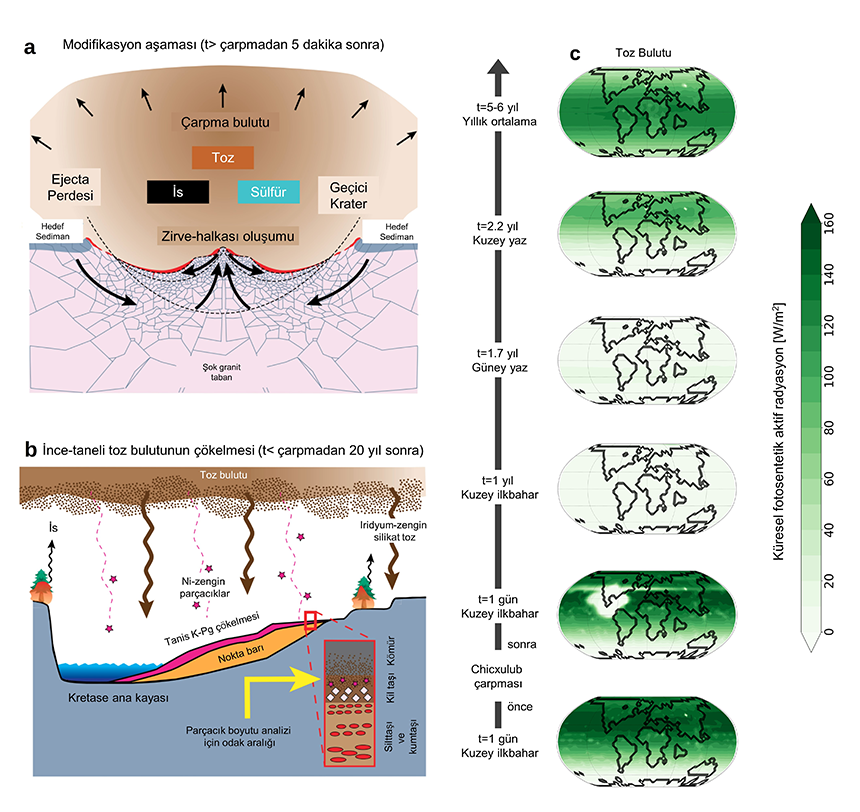by
Mehmet Oğuz Mutlu | Nov 07, 2023
The study, co-authored by our dear alumni Dr. Cem Berk Şenel Dr. Orkun Temel, showing that the dense dust cloud resulting from the Chicxulub giant meteorite impact played a dominant role in global climate cooling and the cessation of photosynthesis was published in Nature Geoscience. We congratulate our graduates and wish them continued success.
The study, co-authored by our dear alumni Dr. Cem Berk Şenel Dr. Orkun Temel, showing that the dense dust cloud resulting from the Chicxulub giant meteorite impact played a dominant role in global climate cooling and the cessation of photosynthesis was published in Nature Geoscience. We congratulate our graduates and wish them continued success.
For details of the article please
click.

[Paleo-art reconstructions depict North Dakota a few months after the Chicxulub giant asteroid impact event 66 million years ago. These reconstructions depict dark, dusty and cold times when the last non-avian dinosaurs were on the verge of extinction, depicted by the Dakotaraptor steine It shows a world. Artist: Mark A. Garlick]

[Conceptual model of the Chicxulub giant asteroid impact, showing a concept model (out to scale) showing the phases of (a) production, (b) transport and deposition. (c) Chicxulub post-impact showcasing the evolution over time of photosynthetically active radiation caused by the silicate dust cloud across the Earth shows paleoclimate model simulations (Senel et al., 2023; Nature Geoscience)]